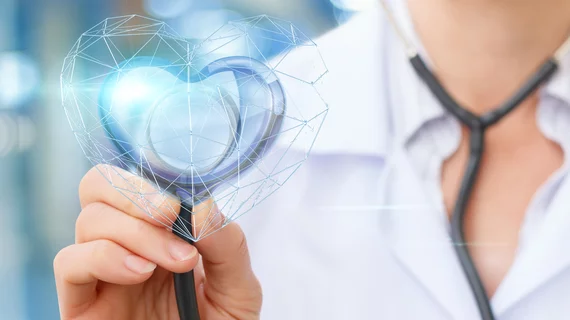2.4% hydrogen could ease risk of brain damage, seizures in CHD patients
The addition of 2.4% hydrogen to hypoxia patients’ traditional ventilation gases improved neurologic outcomes and reduced tissue injury in a recent study of piglets, suggesting hydrogen might be a beneficial addition to therapy for babies undergoing surgery for congenital heart disease (CHD).
The study, funded by the American Heart Association and Children’s Heart Foundation and published in the April issue of JACC: Basic to Translational Medicine, considered infants with CHD who often require open-heart surgery with cardiopulmonary bypass to survive. The procedure is complex and puts those children at considerable risk for brain damage, especially if they’re placed on extracorporeal membrane oxygenation (ECMO) post-op.
ECMO puts children at an even higher risk for neurologic impairment because common blood flow interruptions can trigger hypoxia, leaving patients without enough oxygen. When oxygen is reintroduced to the blood, previously oxygen-deprived cells overcompensate, automatically forming reactive oxygen species that damage DNA and cell membranes.
“During the reperfusion process, the cell mitochondria overreact and end up using oxygen to injure themselves,” senior author John Kheir, MD, said in a release.
Kheir, a cardiologist in Boston Children’s Hospital’s cardiac ICU, secured funding for his work after reading a Japanese study that painted hydrogen as a potent antioxidant. In trials with rats, the chemical eased the effects of reactive oxygen species.
Kheir and colleagues conducted their own study in piglets, introducing 2.4% hydrogen gas to the animals’ usual ventilation gases during and after arrested blood flow and hypoxia. Compared with control animals, those treated with a dash of hydrogen had fewer seizures, fewer brain and kidney injuries and did better in neurologic evaluations.
The team is now working to echo their results in human patients. Researchers have already tested the technique on stroke patients in Japan, and Kheir said hydrogen would be an easy addition to clinical workflows in the U.S. since it can be inhaled through any conventional ventilator. He said his team is planning a safety trial in eight healthy adults at Boston Children’s, but said other groups are likely to benefit from the treatment, including infants undergoing congenital heart surgery and patients suffering stroke or cardiac arrest.
“We’ve gotten better at resuscitating patients and getting the heart to start beating, and even some emergency departments are putting patients onto ECMO,” he said. “But during that time, the brain may be deprived of oxygen. What we want to do is create an ancillary therapy that is cheap and easy to do that can mitigate injury in survivors.”

